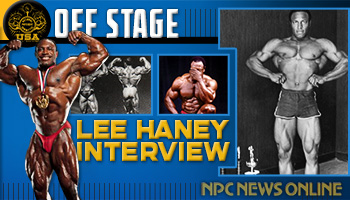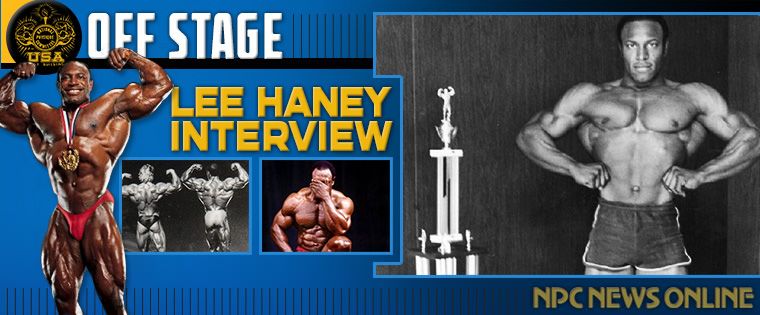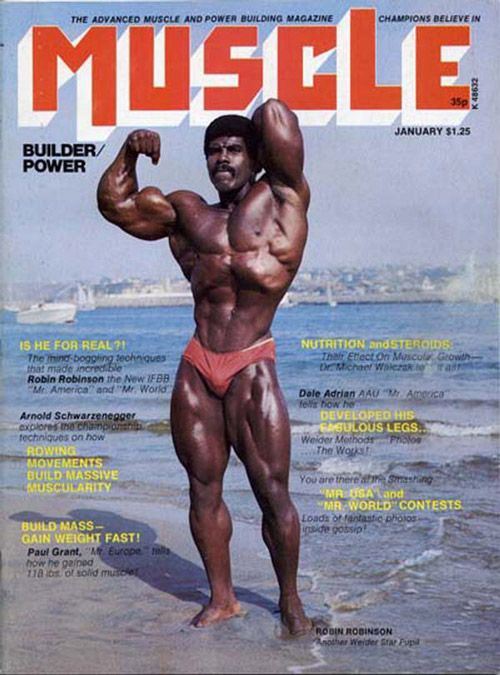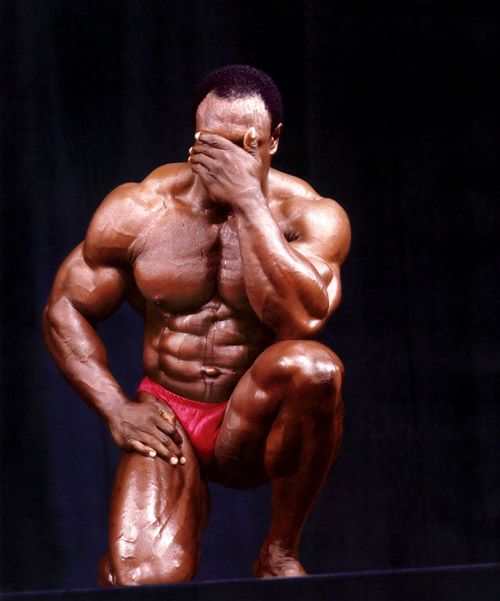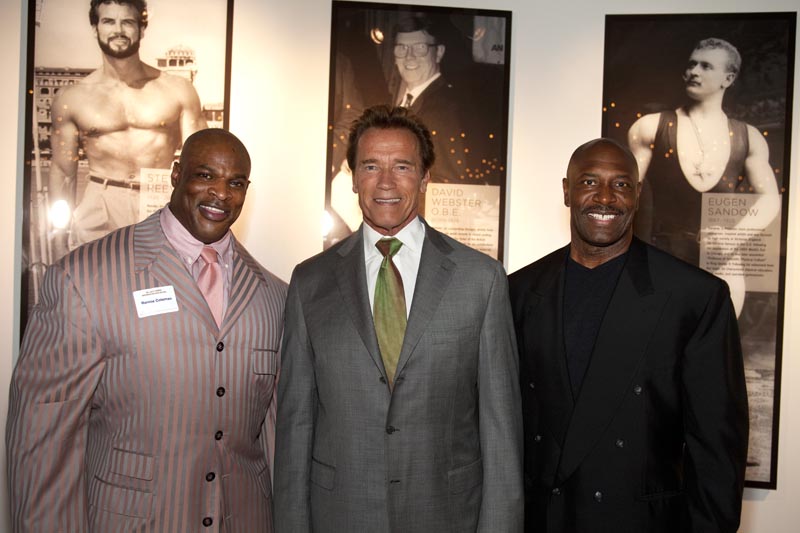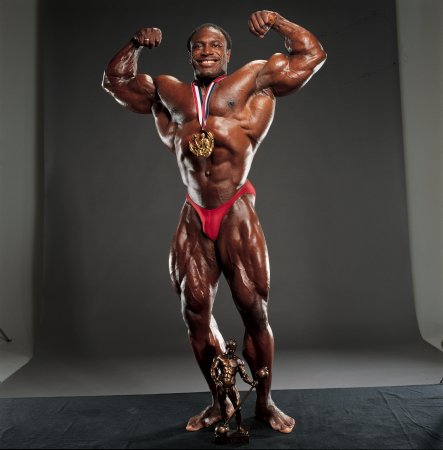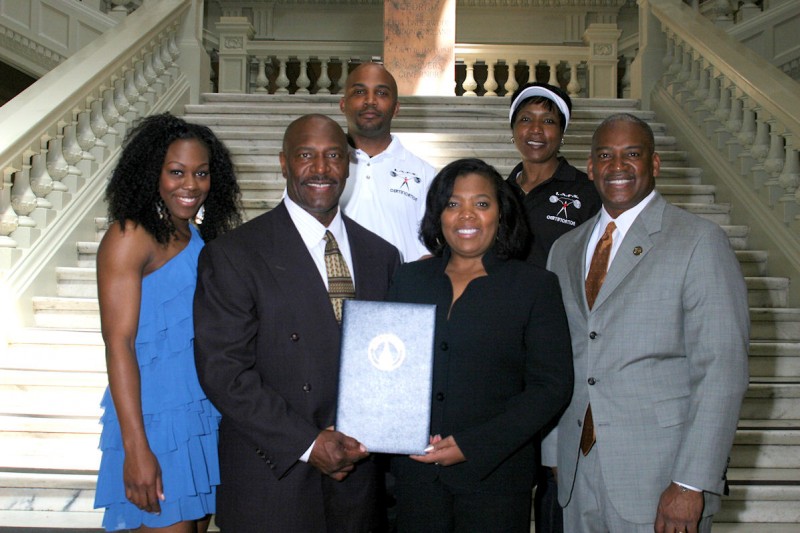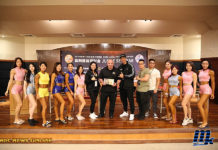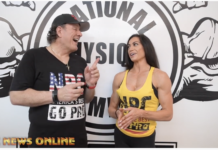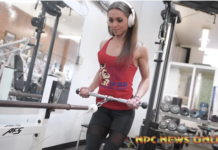Eight-time Mr. Olympia.
There isn’t much more that needs to be said when introducing Lee Haney, the first man to run off eight straight wins on bodybuilding’s biggest stage and set the standard against which all others will be measured for as long as the sport exists. Haney’s first Sandow came in 1984, in just his second season in the IFBB when – as unbelievable as it may sound today – he was just 24 years old. That win set off a streak of dominance that has been matched only once in length, and may never be equaled in terms of how far ahead he was of his competition.
Haney walked away from the stage for good when most competitive bodybuilders are entering their prime, at the age of 31 – but he didn’t walk away from bodybuilding. From starting the International Association of Fitness Science, being appointed to the President’s Council on Physical Fitness and Sports by President Bill Clinton and working with health and fitness enthusiasts of all shapes and sizes, Haney has maintained a continued presence in the industry.
Here, we sit down with arguably the greatest bodybuilder of all time in Offstage: The Lee Haney Interview.
Q: What was your early inspiration to start bodybuilding?
A: “When you say early for me, early was like six years old man! I would daydream of being Samson and Hercules. That was my whole deal ever since I was a kid. My parents bought me a set of weights when I was 11 years old and I would grab whatever I could get my hands on when we went to the grocery story. Magazines and everything as it related to health and nutrition. Anything I could apply to my training.”
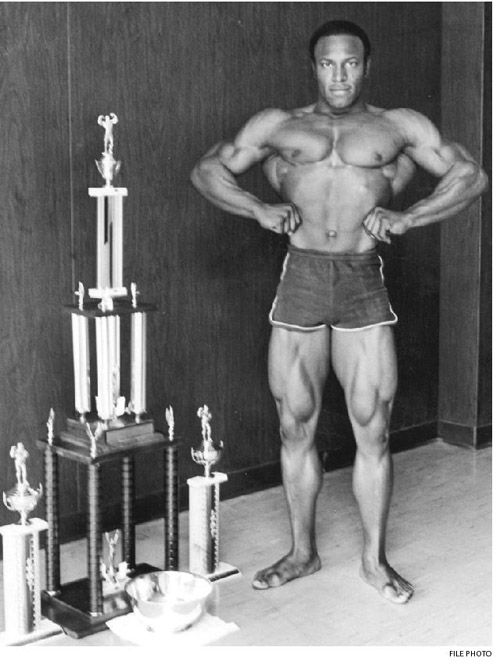
Q: Who were some physiques that inspired you, or motivated you either early in your career or during your career?
A: “My top guy, and one who I tried to pattern my physique after, was Robby Robinson. Robby had one of the most beautiful physiques ever. Everything about Robby’s physique was absolutely incredible. Every workout routine Robby wrote, I would follow it. And then you had Roy Callendar. Here was the two best backs in the business. I really attribute my back development to following the routines of Robby and Roy Callendar.”
Q: You were the first-ever NPC National Champion in 1982. What do you remember most about that time?
A: “I came along when the AAU was there too, and it wasn’t a comfortable situation as it related to the treatment of the athletes. I recall going on stage to do a posing routine sometime at 12 or 1 o clock in the morning after the powerlifting meet was finished. Bodybuilding was secondary [In the AAU], powerlifting was first. I mean, you had one little old light sitting up on a makeshift posing lamp. What I recall with the NPC was that it brought a class to bodybuilding that hadn’t existed before. All of a sudden it was it’s own body, the presentations were much more professional and I loved the fact that the creator of the NPC, he bled real blood as far as bodybuilding was concerned. That’s Mr. Manion. My first impression of the NPC was him, and it was a lasting impression. I was stuck with the question of do I enter the NPC Nationals or do I enter the AAU? After doing some research, I chose the NPC and never looked back.”
WATCH: LEE HANEY AND NPC PRESIDENT JIM MANION AT THE 2012 NPC NATIONALS
Q: You placed 3rd in your first Olympia in 1983. What were your expectations heading into that contest as a second-year pro?
A: “I sized up the competition and knew I was one of the biggest guys there but also was the new kid on the block too. I was just happy to be there among the greatest bodybuilders of all times and then to be the youngest there was quite an achievement. Of course you want to win, but 3rd place – I wasn’t too happy with it but at same time I placed 3rd and had to settle for that. I was disappointed. I recall sitting at the after party with my wife Shirley revamping trying to figure out what happened. ‘How did I place 3rd?’
“But then I had Arnold come over and he said to me , ‘Lee, one thing that I see that you lack, your presentation needs to be a lot sharper. When we get back to California I’m going to introduce you to my posing coach. Once you get your presentation down and more professional, you can be Mr. Olympia.’ He was very sincere, so when I got back to California he did that. And the rest is history.”
LEE HANEY CONTEST HISTORY
1982
NPC Junior Nationals 1st Heavyweight and Overall
NPC Nationals 1st Heavyweight and Overall
IFBB World Championships 1st Heavyweight
1983
IFBB Grand Prix England, 2nd
IFBB Grand Prix Las Vegas, 1st
IFBB Grand Prix Sweden, 2nd
IFBB Grand Prix Switzerland, 3rd
IFBB Night of Champions, 1st
IFBB Mr. Olympia, 3rd
IFBB World Pro Championships, 1st
1984
IFBB Mr. Olympia, 1st
1985
IFBB Mr. Olympia, 1st
1986
IFBB Mr. Olympia, 1st
1987
IFBB Mr. Olympia, 1st
IFBB Grand Prix Germany, 1st
1988
IFBB Mr. Olympia, 1st
1989
IFBB Mr. Olympia, 1st
1990
IFBB Mr. Olympia, 1st
1991
IFBB Mr. Olympia, 1st
WATCH: LEE HANEY VIDEO FROM 1989
Q: You were 23 at that first Olympia. What are your thoughts on qualified competitors who sit out the Olympia?
A: “Well, the first impression is a lasting impression, so you got to go when you’re ready. I was given the invitation to go to the Olympia [in 1982] – at the time I had won the IFBB World Championships in Belgium – and I declined the first time around because I felt I had more to learn. I was careful not to jump too fast into shows. I just came off of the NPC Nationals and the IFBB World Championships, and I had to give my body enough time to recover. Giving my body rest was very important on my list to avoid burnout.
“I met Robby Robinson before that first Olympia and he said to me, ‘Lee, it’s smart to do maybe one or two shows a year. Don’t jump into every show because your system can’t take it. Your system will overload and burn out.’ So I listened to his advice.”
Q: Ronnie Coleman and Jay Cutler both have gone on record in saying that, to them, nothing will compare to winning the Olympia for the first time. Which win stands out most to you?
A: “All of ‘em were special in their own way. The first one was incredible but the last one was even more so. Because at that time I could exhale. There’s nowhere to go but down when you’re up, and you want to get out when you’re on top not when on bottom. The last one I was like ‘Man I can finally take a break. Halelulah! I don’t have to eat seven times a day anymore. I don’t have to run from the pack anymore either.’ You’re always trying to be better than your last contest, and that’s challenging.”
Q: You retired in 1991 after winning your eighth Sandow at just 31 years old. Going by today’s standards, you could have competed at a high level for another 5 to 10 years. Do you ever think “What if”? Like how many more you could have won if you had competed a little longer?
A: “Eight Mr. Olympias – what are you going to say beyond that? You made your point, now let’s use that same drive and motivation in business and sow some seeds in other areas in your life. Lets move to the next mountain. That was my mindset. I said all needed to say, I wanted to see if I could take that energy and be successful in another area of life.
“That’s very important to transition from an athlete to business person. To take your success from the stage and turn it into a business. Because you can’t compete forever as an athlete. You want to use your athletics as a means to continuing.”
Q: I’m going to throw a name out there. Tell me the first thing that comes to your head when you think about them.
Arnold Schwarzenegger
“Golly. So much comes to mind when you think about Arnold. He went beyond the pump, that’s what I can say for him. He said it, he did it, and he put that hard work into whatever he set his mind to do – bodybuilding, film, business, politics. All of that. He set his mind to it and he achieved it. The Amercian Dream. But he’s not from America!”
Dorian Yates
“One thing about Dorian that I sensed, he was like a quiet giant so to speak. He was the first mass monster, but at the same time had a quite and gentle nature about him. But when he came to gym, was a whole other person. He’s an animal in the gym. A real cool guy. An English gentleman.”
Ronnie Coleman
“Ronnie was a mass monster. But what an awesome personality. A big heart, and I mean first class. Ronnie loves people, he can get along with anybody. He’s a humble guy. Ronnie is a beautiful person.”
Q: Phil Heath just won his second straight Olympia. Is there anyone you see out there, anyone coming up, who could challenge him in the near future?
A: “Phil is way out front when it comes to having an understating of his body. He has a very pleasing physique and he knows how to peak on spot. It takes an art in order to learn that. That’s something Jay Cutler was a master at. Ronnie was a master at. Mr. Olympias have to know how to do that, repeatedly, if they want to stay Mr. Olympia. Nobody out there right now has found that combination like Phil has. Some have found it, but they don’t have that kind of physique that can stand toe to toe with him. Phil is going to be there as long as he continues to use the science he has at hand and continues to build on it. Other guys are going to have to catch up – if they ever catch up. I expect to see him around for a while.”
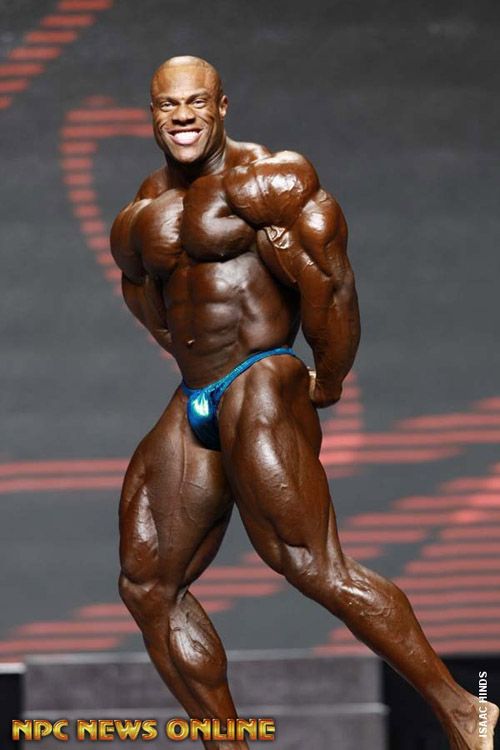
Q: How much has training changed over the years, since your competitive days?
A: “I tell you what has changed- the foundation has totally been blown away and misconstrued. There is so much confusion out there. I get guys all the time wanting me to develop programs who look like they have the physique of a 12-year-old. No legs, no density, no separation – and then they say what kind of routine they’re on. Biceps once a week! That is the most pathetic, lazy, going-nowhere type of program. You see a lot of this goofy stuff from these so-called gurus out there passing along this kind of information, which is terrible. So as a result, there are a lot lot of physiques – particularly on the amateur level – that just aren’t happening because the information got so misconstrued.
“But I tell you what, that’s why the International Association of Fitness Science [IAFS] is a great source for a certification and information, whether they want to train others or themselves. Because the basic foundation of training and nutrition is in place. There is a time and and a season for different kinds of training systems, but you can’t just pick up a system and start using it. You have to know why, when and how.Some guys might train bodyparts once a week but guess what? This guy is a pro. When he was 15 years old he didn’t do that. He had to use the basic fundamental principles. It wasn’t one set to failure and all that.
Q: What advice would you give to an up-and-coming competitor?
A: “Always start with basic foundation of movement. For chest, bench press and incline press. For biceps, bicep curls and preacher curls. Legs, you got squats – that’s the granddaddy of them all right there. Shoulders, military presses and upright rows. Back, chin-ups, barbell rows and t-bar rows.
“Those are your foundation of movements. You have to have them. People ask me, ‘When should I do some cable crossovers?’ And I say, ‘Well, whenever you develop a chest.’ That’s what we teach with the IAFS. Every bodybuilder who has been successful, we use the basic fundamentals of training. Anybody who would tell to a young athlete to go straight to cable crossovers, or cable lateral raises, all this cute stuff you see in some magazines, that’s not the truth. Most of the time they’re just looking for good pictures.
“Another thing I would say, in order to be good bodybuilder and have a good, solid foundation, you have to spend time and maintain certain power movements that have been handed down from the sport of powerlifting. Bench press. Squat, bicep curls. Bent over rows. All of these are power movements, because to be a great bodybuilder you got to have them to develop the size. Then you can build upon that by adding sculpting movements.”
Q: When it’s all said and done, what do you hope your legacy is?
A: “As far as how I compare to some of the other Mr. Olympia winners, I think all of us in our own era were the very best in that era. Every era brings something different. What I’m most excited about is that I was able to pass along information I learned over the years to up-and-coming young athletes. That’s what the with International Association of Fitness Science is about. It’s not just Lee Haney. It’s what I learned from reading articles by Arnold. Boyer Coe, Robby Robinson, Tom Platz, Albert Beckles, Mike Katz. People who have handed down information over the years. That’s who I am. To not mention these guys and the information that was made available to me – I wouldn’t have known how to become a Mr. Olympia.
“I’m proud of my legacy with the IAFS because that information will not be forgotten. My legacy with the IAFS will help preserve the history of our sport. That’s very important to me. Because somebody left behind a history for me to follow and I fed upon that history and became an eight-time Mr. Olympia.”

